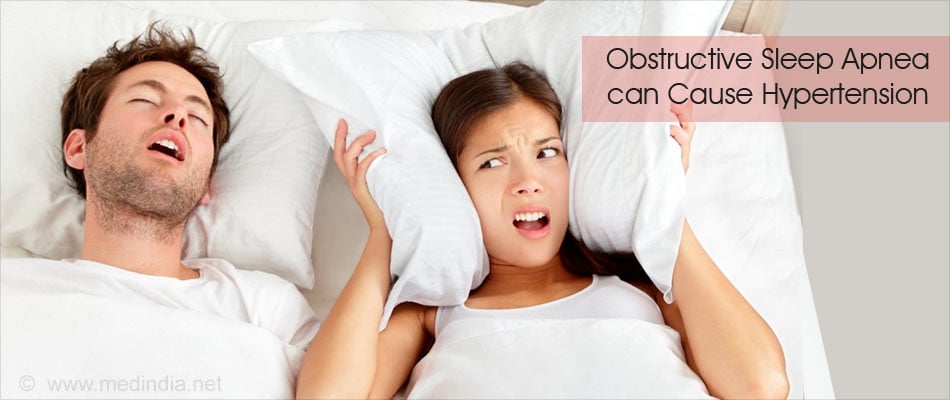- What is Diabetes? - (http://www.niddk.nih.gov/health-information/health-topics/diabetes/your-guide-diabetes/pages/index.aspx)
- High blood pressure (hypertension) - (http://www.mayoclinic.org/diseases-conditions/high-blood-pressure/basics/definition/con-20019580)
- Diabetes - (https://www.nlm.nih.gov/medlineplus/diabetes.html)
What is Hypertension and Diabetes?
Happiness is nothing more than good health and a bad memory. - Albert Schweitzer
Blood pressure in a normal human body is defined as the lateral pressure exerted by blood on the vessel walls. Consequently, if this state of exerting the pressure is persistently high, then this condition is termed as high blood pressure or hypertension. Hypertension according to the Eighth Joint National Committee (JNC 8) is defined as blood pressure greater than equal to 140/90 mm Hg.
On the other hand, diabetes mellitus is a group of metabolic disorders characterized by increased blood sugar.

What are the Causes of Hypertension and Diabetes?
There are two types of high blood pressure.
Primary (Essential) Hypertension: For most adults, there's no known identifiable cause of high blood pressure. This type of high blood pressure is called primary or essential hypertension that tends to develop gradually over many years.
Secondary Hypertension: If the blood pressure is found occurring due to any underlying condition, it is called secondary hypertension. This tends to appear suddenly and cause higher levels of blood pressure than primary hypertension. Various conditions and medications can lead to secondary hypertension, including:
- Chronic kidney disease
- Obesity
- Diseases or tumors affecting the adrenal gland
- Thyroid disorders; endocrine disorders like Cushing syndrome
- Rare tumors like pheochromocytoma
- Certain medications, such as birth control pills, cold remedies, decongestants
- Use of cocaine and amphetamines
- Alcohol consumption
- Obstructive sleep apnea

Causes of the Type 1 and Type 2 Diabetes Mellitus
| Type 1 DM | Type 2 DM | |
| Causes and pathogenesis | Destruction of insulin-producing cells in the pancreas; the pancreas produce little or no insulin | Decreased ability of the body to respond to insulin. Insulin -producing cell starts to dysfunction, manifested as inadequate insulin secretion causing insulin resistance and hyperglycemia. Excessive glucose production by the liver. |
What are the Symptoms and Signs of Hypertension and Diabetes?
Most people with hypertension have no symptoms and hence this disease is also referred to as “silent killer.” Severe hypertension may produce nonspecific symptoms such as headaches, problems with vision, dizziness, shortness of breath, palpitations, and sweating in the forehead. These warrant immediate medical attention.
On the other hand, type 1 and type 2 diabetes have different presentations:
- Increased thirst than usual
- Feeling tired all the time
- Increased urination
- Feeling dry- dry mouth and itchy skin
- Slow-healing wounds
- Pain or numbness in the limbs
- Frequent fungal infections in the warm, moist areas of the skin such as under breasts, in and around sex organs
- Unexpected weight loss
- Being more hungry than usual

In severe cases there can be nausea, vomiting, abdominal pain and symptoms may even progress to unconsciousness.
How do you Diagnose Hypertension and Diabetes?
Hypertension can be easily diagnosed clinically. A simple manual blood pressure cuff monitor also called as sphygmomanometer is used.
For the diagnosis of blood pressure, an inflatable arm cuff is tied around the arm and two to three consecutive readings at different times are recorded. Blood pressure is represented as a fraction, with the numerator value indicating the systolic blood pressure, the pressure with which the heart contracts. The denominator is the diastolic blood pressure, the pressure in the arteries when the heart rests between beats.
| Systolic Pressure | Diastolic Pressure | ||
| Normal BP | <120 | And | <80 |
| Pre hypertension | 120-139 | And/or | 80-89 |
| Stage I | 140-159 | And/or | 90-99 |
| Stage II | >=160 | And/or | >=100 |
| Isolated systolic hypertension | >=140 | And | <90 |
The Joint National Committee (JNC) 8 suggested the following changes in the diagnosis of hypertension:
| Patient Age Group | Target Systolic Blood Pressure (SBP) (mm Hg) | Target Diastolic Blood Pressure (DBP) (mm Hg) |
| ≥ 60 years | <150 | <90 |
| < 60 years | <140 | <90 |
| > 18 years with Chronic Kidney Disease | <140 | <90 |
| > 18 years with diabetes | <140 | <90 |
Source: James PA, et al; JAMA 2013
Criteria for Diagnosing Diabetes
- Fasting plasma glucose >=126 mg/dl
- Aftermeal blood glucose >=200mg/dl measured 2 hours after taking a glucose load of 75g glucose dissolved in water. (This is a test known as Oral Glucose Tolerance Test- OGTT)
- A level of raised glycosylated hemoglobin HbA1c more than 6.5% is also used to diagnose diabetes mellitus. HbA1c represents the blood glucose control over the previous three months.
- Random blood glucose >200mg/dl in individuals with symptoms such as increased thirst, excessive eating and weight loss

How do you Treat Hypertension and Diabetes?
Hypertension
Unless the patient has severe hypertension, there should be a period of assessment with repeated blood pressure measurements, combined with life style modifications prior to the initiation of drug therapy.
The guidelines according to JNC 8 emphasize control of systolic and diastolic blood pressure with age and comorbidity specific treatment cutoffs.
- In patients below 60 years of age- Drug therapy should be considered for blood pressure more than 140/90mm Hg
- And for older patients above 60 years - Drug therapy should be considered for blood pressure 150/90mm Hg
- Patients with diabetes and chronic kidney disease- Drug therapy should be initiated at blood pressure of 140/90mm Hg
- The guidelines also include new recommendations for the use of drugs like ACE inhibitors and ARBs. Combination of drugs or increased dose of the individual drug can be used according to the patient's need.
Initial Drug Class Choices:
- Non-black patients - Thiazide diuretics, calcium channel blockers and ACE inhibitors/ARBs
- Black patients - Thiazide-type diuretics or calcium channel blockers.
- Patients with chronic kidney disease - ACE inhibitors or ARBs.
The drug therapy for the treatment of hypertension includes ACE inhibitors, Beta-blockers, calcium channel blockers, and diuretics.
The treatment aims for two age groups, age<55 years and age >55 years.
For the patients with age <55 years start first with ACE inhibitors followed by a combination of ACE inhibitors and Diuretics OR ACE inhibitors with calcium channel blockers.
If still there is no response to treatment, add the three together.
For the patients with age group >55 years, the initial approach should be a combination of calcium channel blockers with diuretics. Followed by the ACE inhibitor and Calcium channel blocker or diuretic combination, with the combination of all the three components as stated earlier.
Beta-blockers are added as the last resort with lower initial doses and gradually increasing the doses.
Diabetes
The treatment of diabetes mainly aims at controlling the use of sugar and its congeners. Lifestyle modifications are of utmost importance in tackling diabetes. Drug therapy includes the usage of drugs belonging to classes called biguanides (e.g. metformin) , sulfonlyureas, acarbose, thiazolidenediones and DPP 1V inhibitors.
Bromocriptine has been recently approved as an anti-diabetic drug.
If the oral hypoglycemic agents (OHAs- this is the term used for drugs used to treat diabetes) fail to completely control diabetes, insulin therapy is also started. Insulin comes in various types of preparations, some are short-acting and others are long-acting. One of the commonest preparations is Human Mixtard.
How do you Prevent Hypertension and Diabetes?
The following tips may aid in controlling these diseases to an extent:
- Weight reduction – BMI should be < 25 kg/m2
- Low fat and saturated fat diet
- Low-sodium diet – < 6 g common salt per day
- Limited or no alcohol consumption
- Fruit and vegetable consumption
- Reduce the risk of heart disease by stopping smoking; non-vegetarians may include fish in their diet for they are rich with omega 3 fatty acids.
- Adequate exercise – at least 30 minutes brisk walk per day

In the case of diabetes, the following dietary changes should be strictly followed to prevent its occurrence and recurrence.
- Protein: 1 g per kg ideal bodyweight (approx.)
- Total fat: <35% of energy intake. Limit: fat/oil in cooking fried foods, processed meats (burgers, salami, sausages), high-fat snacks (crisps, cake, nuts, chocolate, biscuits, pastry). Encourage: lower-fat dairy products (skimmed milk, reduced-fat cheese, low-fat yoghurt), lean meat
- Saturated and trans- unsaturated fat: <10% of total energy intake
- N-6 polyunsaturated fat: <10% of total energy intake
- N-3 polyunsaturated fat: No absolute quantity recommended. Eat fish, especially oily fish, once or twice weekly. Fish oil supplements not recommended
- Cis-monounsaturated fat: 10–20% of total energy intake (olive oil, avocado)
- Total carbohydrate: 40–60% of total energy intake
- Encourage: Artificial (intense) sweeteners instead of sugar (sugar-free fizzy drinks, squashes and cordials). Limit: fruit juices, confectionery, cake, biscuits
- Sucrose: Up to 10% of total energy intake, provided this is eaten in the context of a healthy diet (examples: fiber-rich breakfast cereals, baked beans)
- Fiber: No absolute quantity recommended. Soluble fiber has beneficial effects on glycemic and lipid metabolism. Insoluble fiber has no direct effects on glycemic metabolism, but benefits satiety and gastrointestinal health
- Vitamins and antioxidants: Best taken as fruit and vegetables (five portions per day) in a mixed diet. There is no evidence for the use of supplements
- Alcohol: Not forbidden. Its energy content should be taken into account, as should its tendency to cause delayed hypoglycemia in those treated with insulin
- Salt: <6 g per day (lower in hypertension)
Health tips
- Get early routine checkups if someone in the family suffers from diabetes and hypertension.
- If a wound doesn’t heal well, or if you find frequent headaches not relieved by taking medications, consult a doctor.
- Avoid taking heavy meals with excessive oil and fat. Also, decrease the intake of sugar in daily foods.
- Indulge in light yoga, and light cardio exercises. This will make the body clear of above diseases.







